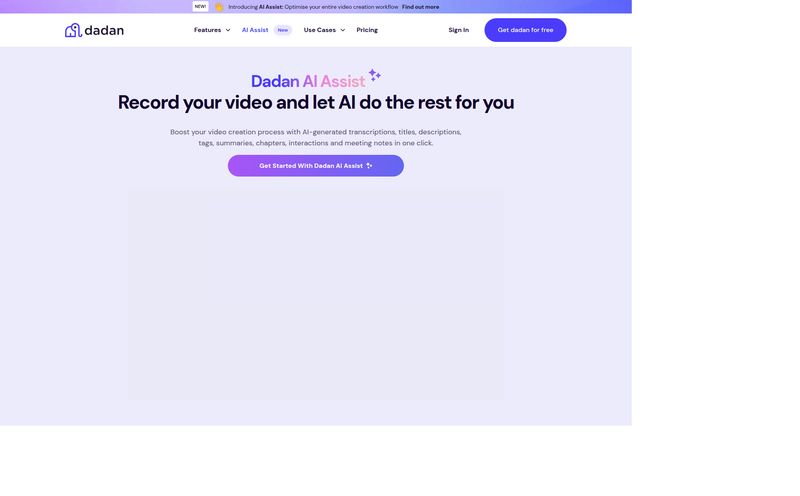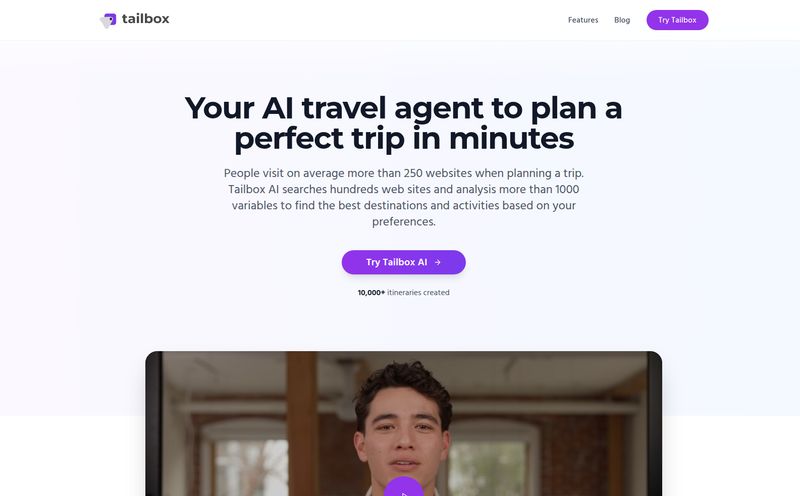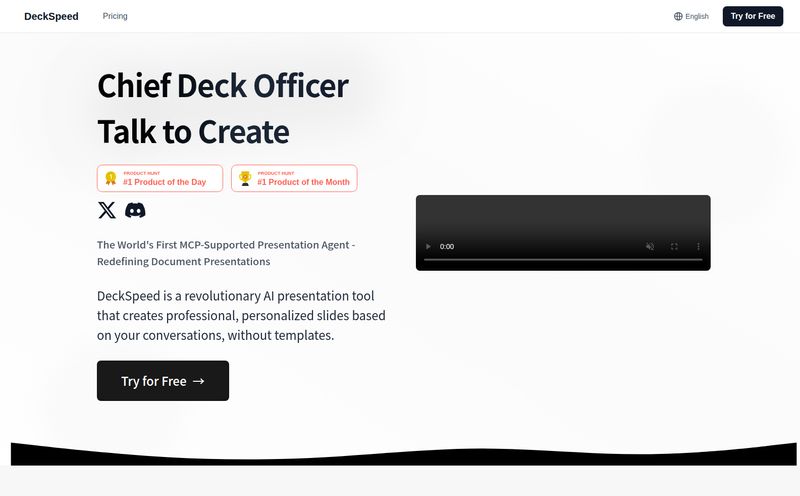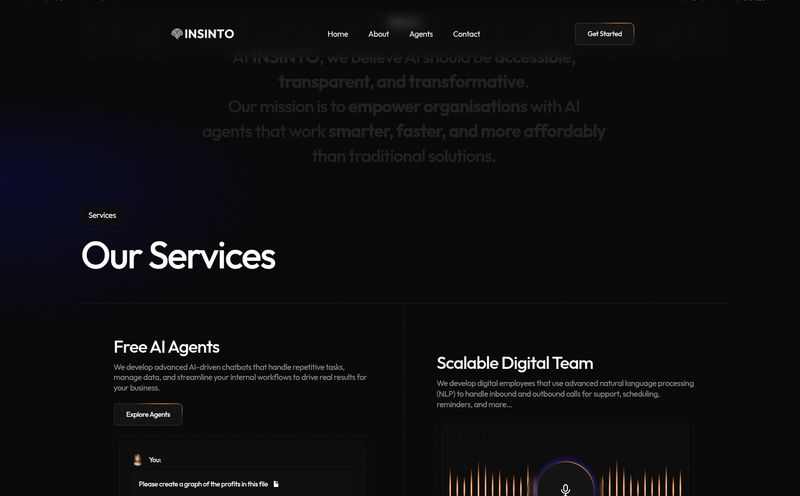We’ve all been there. Tucked in bed, dreaming of clean code and seamless deployments. Then, the piercing screech of an alert rips you back to reality. A critical service is down. Your heart pounds, your mind races, and you stumble to your laptop, preparing for a long night of sifting through digital haystacks of logs, metrics, and traces. It’s a stressful, thankless part of the job that can burn out even the best engineers.
For years, we've been told the solution is 'better observability'. More dashboards! More logs! But sometimes, more data just means more noise. What if the solution wasn't just more data, but a smarter way to interpret it?
That's the promise of a new tool that recently popped up on my radar: Signal0ne. It calls itself an "AI debugging agent," which sounds fancy, but the part that really got my attention was the tagline: an "on-call buddy." I don't know about you, but my on-call buddy is usually a second pot of coffee and a growing sense of dread. An AI partner sounds... intriguing. Let's take a look at what it's all about.
So, What Exactly Is Signal0ne?
From what I've gathered, Signal0ne isn't trying to be another Grafana or Datadog. It's not here to replace your observability stack. Instead, it aims to sit on top of it, acting like a brilliant, tireless SRE that never sleeps. Its main gig is to look at all the alerts and signals your systems are already generating, connect the dots, and tell you why something broke. It's designed specifically for the world of containerized applications—think Docker and Kubernetes, where a problem in one tiny microservice can cause a cascade of failures that's a nightmare to untangle.
Think of it like this: your monitoring tools tell you the house is on fire. Signal0ne is the digital firefighter that runs inside, finds the faulty wiring that started it, and hands you the correct fire extinguisher. This moves beyond simple monitoring into the realm of genuine automated root cause analysis.
The Core Features That Caught My Eye
A tool is only as good as its features, and Signal0ne has a few that seem genuinely useful rather than just being marketing fluff.
Automated Root Cause Analysis
This is the big one. The holy grail. Instead of you manually cross-referencing a CPU spike in one dashboard with an error log surge in another, Signal0ne’s AI does the heavy lifting. It correlates disparate signals to pinpoint the likely origin of an issue. Was it a recent code deployment? A wonky configuration change? A problem with an upstream service? The goal is to get you from “Something is wrong” to “This is wrong” in minutes, not hours.
Context-Rich Alerts
Alert fatigue is real. A vague message like `service-auth-failure-rate > 5%` is a start, but it doesn't tell you much. Signal0ne works to enrich these alerts. It might bundle that alert with information about a recent related code change, a spike in traffic from a specific region, and a correlated database latency issue. Suddenly, you have a story, not just a data point. You have actionable context.
Docker and VS Code Extensions
Okay, this is where I got genuinely excited. Signal0ne isn't just a cloud dashboard; it meets developers where they live. It offers:
- A Docker extension to discover issues while you're still developing locally. Catching a bug before it hits production? Yes, please. This is a massive shift left.
- A VS Code extension to help resolve the issue. The platform can guide you to the problematic code or configuration right inside your editor. This closes the loop beautifully, moving from detection to resolution within a single workflow.
Suggested Runbooks for Mitigation
Finding the problem is half the battle. Fixing it is the other half. Signal0ne proposes runbooks—step-by-step guides—to mitigate the issue. This could be a game-changer for new team members or when an on-call engineer is faced with a problem in a part of the system they're not familiar with. It's like having a senior engineer's notes right there when you need them most.
Putting It All Together: A Hypothetical Night On-Call
Imagine this: it’s 3:05 AM. An alert fires. But instead of a cryptic message, you get a notification from Signal0ne.
It says, “High latency detected in the `checkout-service`.” But it doesn't stop there. It continues: “Correlated with commit `#a4d3e8f` deployed 20 minutes ago. The change introduced a new database query that lacks proper indexing. The root cause is likely in `payment_processor.py` on line 87. We suggest rolling back the deployment or applying the attached index suggestion.”
You open VS Code, the Signal0ne extension points you to the exact line of code, you verify the crappy query, and trigger the rollback. By 3:15 AM, the system is stable, and you're heading back to bed. This is the dream. This is what tools like Signal0ne are trying to sell us on.

Visit Signal0ne
The Good, The Bad, and The... Setup
No tool is perfect, of course. Based on the info available, here’s my take on the pros and cons.
The Good Stuff
The biggest pro is the potential time and sanity saved. Automating root cause analysis could drastically reduce MTTR (Mean Time to Resolution), which is a metric every engineering manager loves to see go down. The integration into the developer workflow with VS Code and Docker extensions is a massive plus in my book. It shows a deep understanding of how modern software teams actually work.
Potential Hurdles
On the flip side, the official docs mention a couple of things to be aware of. First, you'll need to verify compatibility with your specific tools. It's designed to work with existing observability stacks, but you'll have to make sure it plays nice with your stack, whether that's Prometheus, Jaeger, Datadog, or something else. Second, it's not quite magic. It requires some initial setup of alert enrichment and correlation flows. This makes sense—the AI needs to be taught what's normal and how your services talk to each other. It’s an investment upfront for a payoff later.
What About The Cost?
This is the million-dollar question, isn't it? As of writing this, Signal0ne's website doesn't list any public pricing information. This isn't uncommon for new, specialized B2B tools. It often means they're using a custom pricing model based on team size, number of services, or data volume. It could also mean they're still in an early-adopter phase, potentially offering pilot programs or custom deals.
My guess? We'll see a tiered model, maybe a free tier for small projects to get you hooked, followed by professional and enterprise plans. For now, the best bet is to reach out to them directly via their contact email (`[email protected]`) if you're serious about trying it out.
Who Is Signal0ne Really For?
I see this being a perfect fit for a few key groups:
- Fast-growing startups running on microservices who need to keep their small teams focused on building features, not firefighting.
- Established companies with complex, sprawling systems where institutional knowledge is starting to fade and new engineers struggle to debug legacy interactions.
- Any DevOps or SRE team that feels like they are drowning in alerts and want to move from a reactive to a more proactive posture.
If you're a solo dev running a simple monolith, this might be overkill. But if you're in the containerized, distributed systems world, this is definitely the kind of tool that should be on your watchlist.
Final Thoughts: Is This the Future of Debugging?
Look, the term "AI" gets thrown around a lot, often with little substance behind it. But Signal0ne seems to be applying it to a very real, very painful problem. The idea of an "AI on-call buddy" is more than just clever marketing; it reflects a fundamental shift in how we can approach system reliability.
It's not about replacing engineers. It's about augmenting them. It’s about turning every on-call engineer into your best, most experienced troubleshooter by giving them a powerful assistant. While it's still early days, and I'd need to see it in action against a truly chaotic production fire, the concept is incredibly sound. It’s a tool built for the way we build software now. And for that reason alone, I'm keeping a very close eye on Signal0ne.
Frequently Asked Questions
- Can Signal0ne integrate with my observability stack?
- Yes, that's the intention. It's designed to connect with your existing tools (like Prometheus, Grafana, Datadog, etc.) to pull in the signals it needs for analysis. However, you'll want to confirm compatibility with your specific set of tools.
- How can I get started with Signal0ne?
- The best way currently seems to be by visiting their website, checking out their GitHub, and contacting them directly. They likely have a process for onboarding new users or teams for a demo or pilot program.
- Is Signal0ne just for production environments?
- No, and that's one of its strengths. With the Docker extension, it aims to help you find and fix issues on your local machine during development, long before they have a chance to impact users. It covers the full lifecycle.
- What kind of issues can Signal0ne help resolve?
- It's focused on issues in live, containerized applications. This includes bugs in your code (like inefficient queries or logic errors) and problems with your configuration (like resource limits, network policies, or incorrect environment variables).
- Does Signal0ne automatically write the code fix for me?
- Not exactly. It won't automatically commit a code change. Instead, it diagnoses the problem, points you to the exact location in your code via the VS Code extension, and suggests a mitigation strategy or runbook. It acts as a powerful assistant, but the developer is still in control of the final fix.
References and Sources
- Signal0ne Official Website: (Presumed to be signalone.ai, based on contact info)
- Signal0ne GitHub: https://github.com/Signal0ne
- Signal0ne LinkedIn: (Link can be found on their website)



